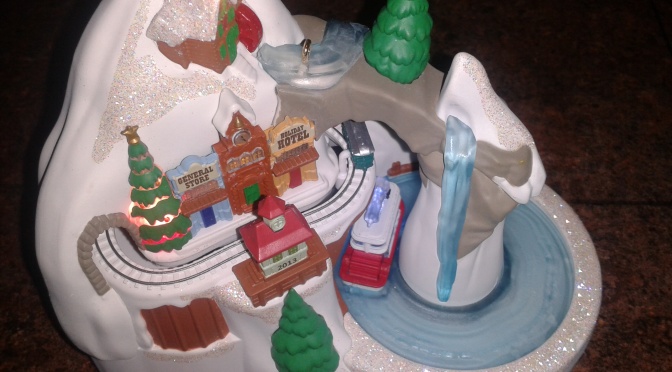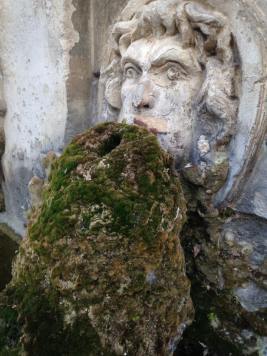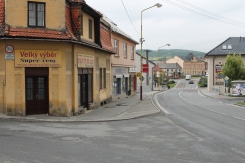A step back in time to Monday Nov. 27 in 1989
Lowell, MI- It was Monday under the sign of Sagittarius as George W. Bush took the presidential torch from Ronald Reagan.
It was also the release of “Christmas Vacation” with Chevy Chase and John Grisham topped the bestselling list with his “A Time to Kill.” Two major tragedies set 1989 apart from the rest: the massacre at Tiananmen Square and the Exxon-Valdez oil spill.
Just as the world lost Salvador Dali in 1989, Taylor Swift was born, according to takemebackto.com.
The following are excerpts from my memoir “Greenwich Meridian” (c) copyright 2016 Emma Palova.
“That Monday morning I dressed up warm in my Benetton jacket adorned with an tricolor ribbon, a red, white and blue sweater and jeans. I made a quick snack for the four-hour trip from Zlin to Prague. It was probably an old croissant with salami.
I boarded the 6 a.m. train to Prague called “Citron” packed with young people in the standing room only aisles.
As daylight broke into the dark morning, I felt the crisp air from the outside brush my red cheeks. Exhausted from the events of the past few months, I didn’t sleep much. I was shaking and not just from the November chill.
The last 10 days since the Nov. 17 student demonstrations in Prague were filled with political turmoil and uncertainty. I was either glued to the TV much like the entire nation or demonstrating on the town square in Zlin.
The communist regime has already fallen in the neighboring Poland. We all supported the Polish leader of revolution, Lech Walesa along with our own dissident Vaclav Havel and the Civic Forum (CF) that led the movement for freedom. This movement entered modern history as the Velvet Revolution, lasting from Nov. 17 through Dec. 10, 1989.
The mass media in former Czechoslovakia informed the nation about the General Strike on Nov. 27 in Prague and all the major cities.
“Please participate in the strike,” the media encouraged, “or if you cannot hold solidarity with the people on strike.”
That Monday, a nation that could not agree on anything, walked out of universities, factories and offices to show the power of the people.
Twenty-seven years later sitting behind my desk on a Sunday morning in rural America, while it’s still dark outside, I ask myself:
“What if the manifestation went violent like in Tiananmen Square?”
I left that trail of thought untouched.
As we disembarked from the train at the art nouveau Prague Main Station, like a river, the crowds flowed into the Wenceslas Square. 300,000 people howled in the square from noon to 2 p.m. holding their arms up with hands in the peace sign.
“Havel to the castle,” I chanted along with the crowds.
We wanted the poet, the playwright and the dissident Havel, to become the next president of Czechoslovakia, as we rang our keys and little bells.
That ring magnified by millions across the nation signified that the hour of freedom has arrived after years of darkness and oppression.
For Havel, it was an uneasy progression from a communist jail cell to the Hradcany Castle, over the last two decades since the Prague Spring in 1968.
I’ve always been claustrophobic, and the moving crowd made me nauseous. The defunct communist leadership under President Gustav Husak met most of the demands of the Civic Forum (CF), so the demonstration ended peacefully.
I remember heading into one of the pubs on the Lesser Square aka Mala Strana on the other side of the Vltava River. Havel frequented that area, and in 1994 as the president of Czech Republic, visited one of the pubs with the former USA president Bill Clinton.
Meanwhile, a different story was transpiring on the home front on that gloomy Monday. The late afternoon train took me back to hometown Zlin.
My grandpa Joseph passed from lung cancer at the Vizovice Hospital of Merciful Friars after steadily deteriorating for six months.
In one of the last conversations held at the white hospital room, that smelled of a heavy disinfectant agent, grandpa asked me about his beloved ranch. That is the house at 111 Krnovska Street in Vizovice that I inherited in grandpa’s will. Together, with husband Ludek and daughter Emma, we spent many delightful years at the ranch.
“You know I had to sell it, so I can leave the country,” I explained patiently for the 100th time.
After selling all my worldly possessions as a condition to emigration, I was holding tight onto my exit visa to the USA. Ludek was waiting for his emigration visa in Pabneukirchen, Austria.
“The ranch is in good hands of a person who loves it,” I reassured grandpa.
“Who is it?” grandpa whispered in pain.
“It’s Eugene,” I said in equal emotional pain.
“Mr. Drabek, do you want your yogurt,” asked a nurse traditionally dressed in blue with white apron and a starched white hat.”
“No,” sighed grandpa turning away from us.
…………………………………………………………….I remained in the country until Dec. 22.”
What’s your story?
In the pictures: Top, late Vaclav Havel lays flowers at the Velvet Revolution memorial on Wenceslas Square in Prague.
Bottom: Grandpa Joseph Drabek with wife Anna, daughters left to right: Ella & Anna.
For more stories on Velvet Revolution go to https://wordpress.com/post/emmapalova.com/172636
For more info on certain dates go to takemebackto.com
Copyright © 2016 Emma Blogs, LLC. All rights reserved.




































